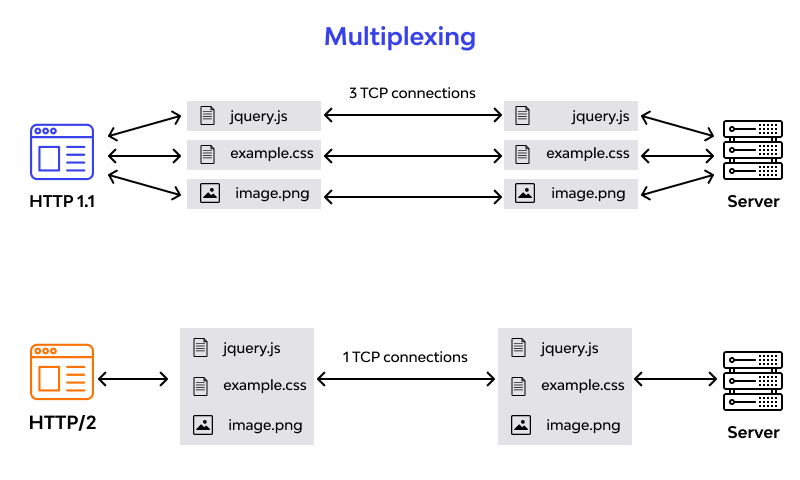HTTP2
HTTP/2 (Hypertext Transfer Protocol Version 2), initially named HTTP 2.0, is a major revision of the HTTP network protocol used by the World Wide Web. It is abbreviated as h2 (for encrypted connections based on TLS/1.2 or above) or h2c (for non-encrypted connections). HTTP/2 is designed to improve the performance and efficiency of data transfer between web servers and clients.
HTTP/2 is the first major update to the HTTP protocol since the release of HTTP/1.1 in 1999, primarily based on the SPDY protocol. By the end of 2015, most mainstream browsers had already supported this protocol. HTTP/2, released by the IETF in 2015, aims to enhance web performance, reduce latency, increase security, and make web applications faster, more efficient, and more reliable.

Key Features of HTTP/2
Here are some key features and improvements of HTTP/2:
- Multiplexing: HTTP/2 allows multiple requests and responses to be sent simultaneously over a single TCP connection, unlike HTTP/1.1, which processes them one at a time. This reduces latency, increases efficiency, and improves network throughput.
- Binary Protocol: HTTP/2 uses a binary protocol instead of the text-based protocol used in HTTP/1.1. Binary protocols are faster to parse, more efficient in data transmission, and reduce overhead and latency during transmission.
- Header Compression: HTTP/2 uses the HPACK algorithm to compress HTTP headers, reducing the amount of data transmitted and thereby decreasing network latency.
- Server Push: HTTP/2 supports server push, allowing servers to send resources to clients proactively before they are requested. This improves performance by reducing request latency.
- Enhanced Security: HTTP/2 defaults to using Transport Layer Security (TLS) to encrypt data transmission, improving security.
- Backward Compatibility with HTTP/1.1: HTTP/2 can coexist with HTTP/1.1. Servers can support both HTTP/1.1 and HTTP/2 simultaneously. If a client does not support HTTP/2, the server can fall back to HTTP/1.1.
Overall, HTTP/2 offers significant improvements in performance, security, and usability, making web applications faster, more efficient, and more reliable.
Multiplexed Data Transfer
HTTP/2 employs multiplexed data transfer, allowing multiple requests to be combined within a single TCP connection, as shown in the diagram below:

Reduced Network Latency
HTTP/2 reduces network latency and improves browser page load speed:

Binary Data Transmission
HTTP/2 transmits data using a binary format instead of the text format used by HTTP/1.1. This enhances efficiency and reduces data transmission latency:

Header Compression
HTTP/2 uses header compression to reduce the size of transmitted data. This helps decrease network bandwidth usage and improve page load speed:

Server Push
HTTP/2 allows servers to proactively send data to clients without being requested. This helps reduce request latency and improve page load speed:
By implementing these features, HTTP/2 significantly enhances the performance, security, and efficiency of web communication, making it an essential upgrade for modern web applications.


